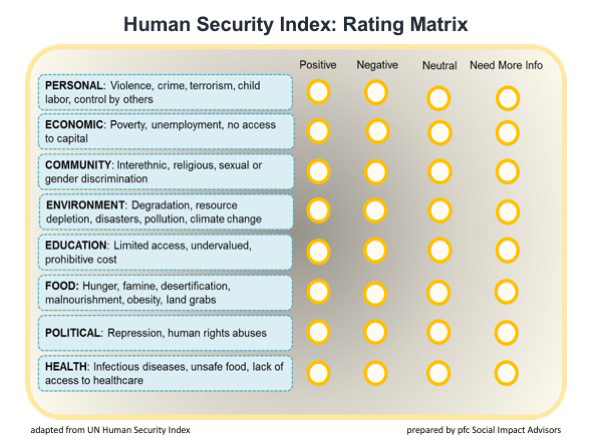Successful businesses continuously update their knowledge of what customers want. Walmart collects more than 2.5 million gigabytes of customer data per hour and Yelp users post 26,380 reviews per minute. So why do many impact investors, who seek social, environmental, and economic returns on patient timelines, park customer insight at the door when they want to achieve multiple bottom lines?
It’s a question I’ve asked more than 500 senior business executives from 90 countries who have attended the Oxford Impact Investing and Oxford Social Finance programs at Saïd Business School over the past six years. And it’s one I’ve pursued in research involving 1,200 social investors across 20 countries.
Their answers indicate they think of social impact beneficiaries differently than commercial customers. But they shouldn’t. Overlooking any target customers’ needs can lead to failed investments. And understanding those needs can be critical to creating breakthrough products and services for any demographic. Impact investors need different tools for gathering unvarnished customer insight to achieve both a social and financial return on investment.

Blind Spots and Consequences
The following blind spots frequently surface when I query impact investors on gathering end-user feedback:
I have a great idea to benefit poor communities. I didn’t think there was a need for their feedback. Impact investors may believe their investment will be unequivocally embraced by the communities they seek to support. No matter how well intended, this top-down approach can only perpetuate an unhealthy power imbalance between investors and the people they invest in.
My intermediary has the feedback issue covered. Impact investors frequently hire in-country organizations or issue-area experts to provide insight into communities that are targets of new or expanding products or services. But intermediaries may not report back to those communities about how their suggestions have influenced the investors, a practice which can empower ongoing community input. Intermediaries are often insufficient to align the needs of investors with those of the community.
I never thought about community feedback. Less experienced impact investors often don’t know what they don’t know about working at the local level. And even if they have thought about listening to the community as a way to inform their investment strategy, they may not be aware of feasible ways to go about doing so.
Each of these blind spots can lead to potential negative consequences. Take, for example, the initial sale and distribution of insecticide-treated malaria nets to fight disease in developing countries. Too often, investors failed to work with target communities before introducing a new product, or they didn’t stick around to gather feedback on how the nets were used. As a result, many consumers in developing countries used them as fishing nets, which caused widespread ecological damage.
Similarly, in Liberia, investors in a large-scale biomass energy project did not spend sufficient time with local farmers, charcoal producers, and workers throughout the life of the project which led to deforestation and labor violations, including sexual abuse of workers by the energy company’s employees as documented by the Accountability Counsel. It is important for investors to ensure that due diligence and community engagement occurs from entry to exit.
Approaches and Tools to Clarify Consumer Preference
On the flip side, there are plenty of examples of impact investors consulting communities and gathering feedback prior to project design and implementation.
To do that work they’re using approaches and tools like embedding volunteers, the Deliberate Leadership framework, and the United Nation’s human security framework.
UBS Optimus Foundation (UBSOF), through its social finance portfolio, has worked through the intermediary Educate Girls to seek insight from community contacts, including 12,000 volunteers, to break down economic and cultural barriers to educating girls in India. This feedback allowed UBSOF and its partners to exceed impact goals for the project, which issued the world’s first education Development Impact Bond.
Similarly, through a Social Success Note, The Rockefeller Foundation and UBSOF have supported Impact Water, a social business providing clean water to schools in Uganda, which proactively uses focuses groups to gather community feedback to hone its services and business model.

Beyond working with deeply embedded community members, impact investors can get a sense of community needs via the Deliberate Leadership framework, which puts investee communities at the center of investment due diligence and builds investment strategy from the ground up. The framework involves:
- Mapping community partners and following up through surveys, focus groups, and conversations to build a local strategy that incorporates feedback throughout the investment process from entry to exit.
- Listening to divergent viewpoints and building collaborations to reflect these different perspectives, however uncomfortable the process.
- Building empathy among investors for the people and communities their investments support.
Active, iterative community feedback anchors this framework. While the power and utility of such feedback is often acknowledged, it remains the exception and not the rule.
Other impact investors are using the human security framework developed by the United Nations Development Program (UNDP) to assess a proposed intervention’s potential positive or negative impacts on communities. This matrix can help investors assess threats and opportunities they may not have considered and highlights where they may need more information. For example, it helps investors understand whether an investment has a positive, negative, or neutral effect on factors including economic, environmental, and health security.
What’s at Stake for Impact Investors Who Listen
The United Nations 17 Sustainable Development Goals aim to create global, social, economic, and environmental security by 2030. They come with a $2.5 trillion funding gap, toward which impact investments are flowing. For such investments to create lasting change, investors will need to listen and learn from those they seek to support. Only by listening intently to the voices of community members and by committing to respond to local needs can funders make impact investments pay off.
This article is part of a series that was produced for Stanford Social Innovation Review by Milway Media with the support of the William and Flora Hewlett Foundation.
Support SSIR’s coverage of cross-sector solutions to global challenges.
Help us further the reach of innovative ideas. Donate today.
Read more stories by Gayle Peterson.

